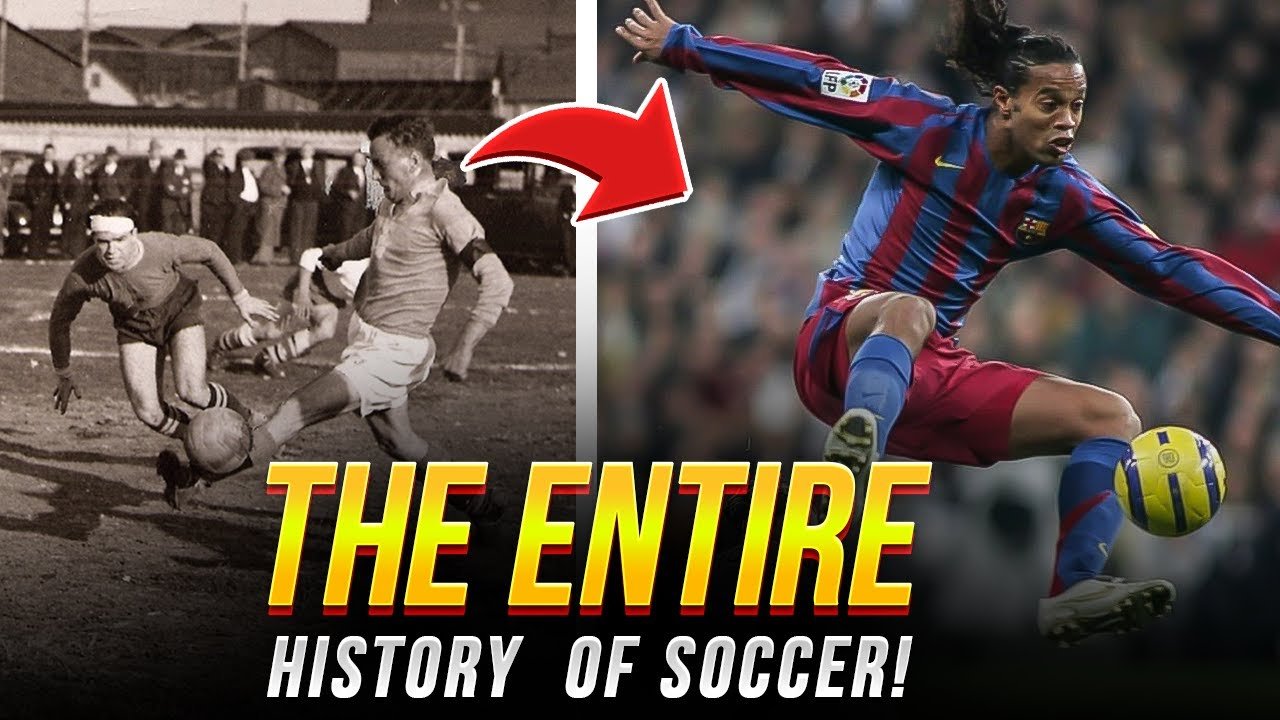The History and Evolution of Soccer, Soccer’s journey from primitive ball games to the world’s most popular sport is a fascinating tale of cultural exchange, rule changes, and global passion. This 3,500-word definitive history explores:
-
Ancient roots and medieval precursors
-
The birth of modern football rules
-
Global spread and cultural adaptations
-
Evolution of tactics and playing styles
-
The future of football’s development
⚽ Ancient Beginnings: Football’s Earliest Forms
1. China’s Cuju (3rd Century BCE)
-
Description: Kicking leather ball through silk net
-
Military Use: Training exercise for soldiers
-
Rules: No hands allowed, similar to modern soccer
2. Mesoamerican Ballgames (1500 BCE)
-
Cultural Significance: Often had religious meaning
-
Unique Feature: Used rubber balls centuries before Europe
-
Brutality: Some versions ended in human sacrifice
3. European Mob Football (Medieval Period)
-
Chaotic Nature: Entire villages playing across miles
-
Controversy: Repeatedly banned by kings (1314-1667)
-
Legacy: Shrovetide games still played today
For archaeological evidence: FIFA Football History
Codification: Birth of Modern Soccer (19th Century)
Key Milestones in Rule Development
| Year | Development | Impact |
|---|---|---|
| 1848 | Cambridge Rules | First written standards |
| 1863 | FA Formation | Split from rugby |
| 1872 | First Int’l Match | Scotland vs England |
| 1886 | Goal Nets Introduced | Settled scoring disputes |
The Great Schism: Rugby vs Soccer
-
1863 FA Meeting: 11 crucial rules established
-
Controversy: Carrying ball vs kicking-only debate
-
Result: Rugby Football Union formed 1871
Global Spread: How Soccer Conquered the World
British Empire’s Role
-
Exports: Workers, sailors, and soldiers spread the game
-
First Clubs:
-
Argentina (1867)
-
Brazil (1894)
-
India (1892)
-
Cultural Adaptations
-
Brazil: Developed samba style on beaches
-
Italy: Catenaccio defensive system
-
Netherlands: Total Football revolution
Evolution of Playing Styles (1900-Present)
Tactical Timeline
| Era | Dominant Style | Key Innovator |
|---|---|---|
| 1920s | 2-3-5 Pyramid | Herbert Chapman |
| 1950s | 4-2-4 Magic Square | Márton Bukovi |
| 1970s | Total Football | Rinus Michels |
| 1990s | 4-4-2 Pragmatism | Arsène Wenger |
| 2020s | Positional Play | Pep Guardiola |
For tactical analysis: UEFA Technical Reports
⚡ Revolutionizing Moments in Soccer History
1. First World Cup (1930)
-
Host: Uruguay
-
Participants: 13 teams
-
Legacy: Created global tournament model
2. European Cup Introduction (1955)
-
Innovation: Continental club competition
-
Impact: Raised club football’s profile
3. Backpass Rule Change (1992)
-
Problem: Defensive time-wasting
-
Solution: Keepers can’t handle deliberate backpasses
-
Result: More attacking play
Equipment Evolution
Boots Through the Ages
-
1920s: Heavy leather work boots
-
1950s: Lighter screw-in studs
-
1990s: Synthetic materials
-
2020s: Smart sensor-equipped boots
Ball Technology
-
1930s: Laced leather (absorbed water)
-
1970s: Telstar’s black/white panels
-
2006: Teamgeist seamless design
-
2024: Smart balls with embedded sensors
Media’s Transformative Role
Broadcasting Milestones
-
First TV Broadcast (1937, England)
-
Color Transmission (1968, Mexico)
-
Premier League TV Deal (1992, £304m)
-
4K/VR Streaming (2020s)
Social Media Impact
-
Player Brands: Messi 500M followers
-
Fan Engagement: 24/7 access
-
Controversies: Online abuse issues
⚖️ Governance and Scandals
FIFA’s Controversial History
-
1974: Havelange’s commercialization
-
2015: Corruption indictments
-
2026: Expanded World Cup format The History and Evolution of Soccer
Match-Fixing Episodes
-
Calciopoli (2006 Italy)
-
1915 (Man Utd-Liverpool collusion)
-
2023 (Brazilian Serie B scandal)
The Future of Soccer’s Evolution
Coming Innovations
-
Semi-Automated Offsides
-
Climate-Controlled Stadiums
-
eSports Integration
-
Women’s Game Growth
Challenges Ahead
-
Player Workload
-
Financial Inequality
-
Technology Balance
❓ Fan Questions Answered
Q: Who invented soccer?
A: No single inventor – evolved over centuries
Q: Oldest professional club?
A: Sheffield FC (1857)
Q: Why 90 minutes?
A: 1866 London compromise
For historical archives: Soccer NewsZ History Hub


No comment